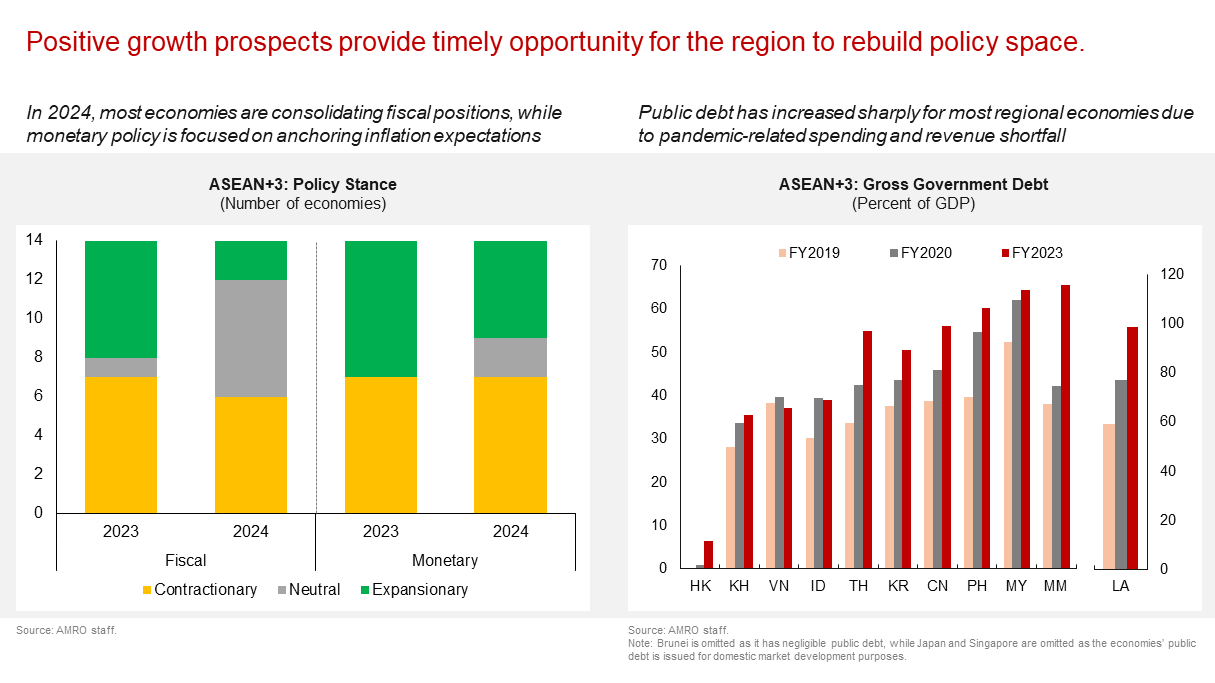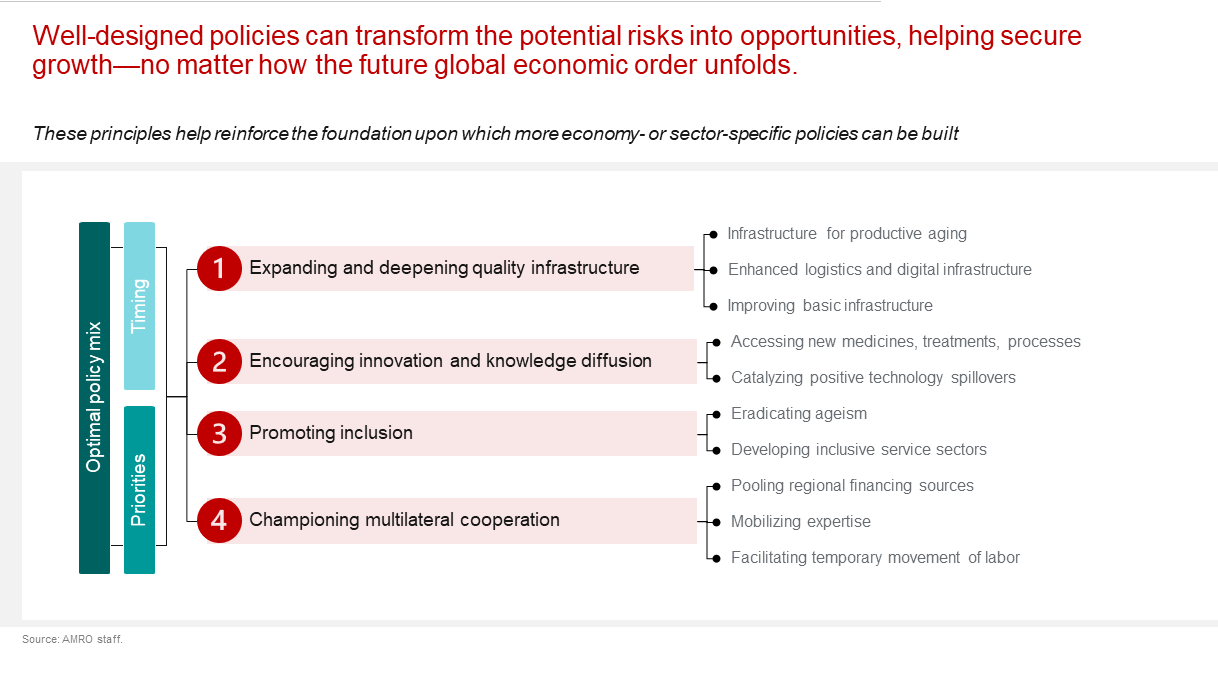Positive Economic Outlook Presents Opportunity for ASEAN+3 to Rebuild Policy Space, Address Long-term Challenges
AMRO staff forecast growth in ASEAN+3 at 4.5 percent this year—from last year’s 4.3 percent—and 4.2 percent in 2025, with growth for ASEAN at 4.8 and 4.9 percent, respectively.
The stronger growth momentum this year will be mainly driven by robust domestic demand, with the anticipated turnaround in exports and the continued recovery of tourism providing additional tailwinds. Inflation in ASEAN+3—excluding Lao PDR and Myanmar—is expected to moderate from 2.8 percent last year to 2.5 percent in 2024, before easing further to 2.3 percent in 2025.
This year’s thematic chapter, Navigating Tomorrow, delves into three major trends—aging, global trade reconfiguration, and rapid technological change. These trends are interacting in complex ways that make ASEAN+3’s long-term growth trajectory more opaque. To successfully navigate these crosscurrents, the region must manage the risks they bring while taking advantage of the growth opportunities they offer.





